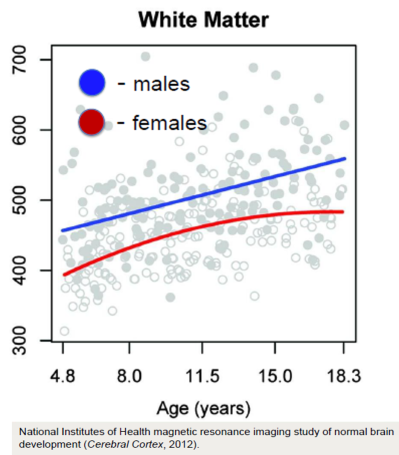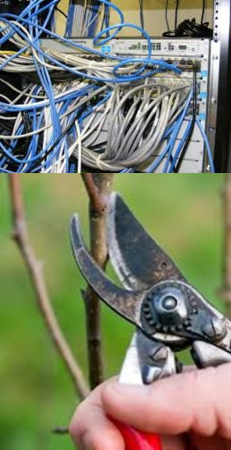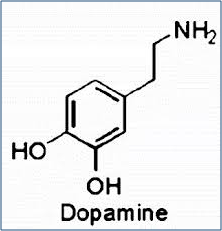What makes adolescents different to us “grown-ups”? This was my opening question at #TLT14 to my workshop participants. When you think about it, this is quite a question. Biologically, emotionally, psychologically and socially adolescents often seem like a different species. The answers I got back were not unexpected, but showed a unity of understanding – “They can’t see the bigger picture of life”, “They can’t seem to understand why certain decisions need to be made”, “They’re much less organised”, “They can’t get out of bed in the morning” and so on.
My response to these differences? No wonder. For many years, there was a commonly held belief that our brains have the greatest capacity for learning in the formative years of life – many believed up to the age of seven. However, the research which has been carried out by neuroscientists, particularly in the USA, over the last 15-20 years has revolutionised our understanding of how the brain develops from birth to adulthood and this research has some pretty serious implications for educators. Below is a picture showing the longitudinal MRI study of the brain which was carried out by the National Academy of Science in the USA which has been fundamental in our understanding of how the brain develops through childhood into adolescence.
In May 2014, the TES magazine carried an article by UCL neuroscientist Sarah-Jayne Blackmore which addresses many of the issues raised by this study, our understanding of the teenage brain and the implications for educators which reaffirmed the thoughts I was having at the time about the direction our school was taking with learning. Also, interestingly, a few days before my #TLT14 workshop, Mark Anderson published this blog on behalf of Independent Thinking which resonates with much of my thinking and the ideas we have adopted at our school to try to support our young people as they grapple with a world still new to them and try to cope in an environment created by people who simply don’t have the capacity to see it through their eyes.
For me, there are three fundamental issues related to adolescent brain development we need to consider as teachers. I am about as far removed from being a neuroscientist (or any kind of scientist other than a social one) as I could possibly be so you will have to forgive my simplistic interpretation of this research in this post. I have explained things in a way which make sense to me in the hope that they will for you too.
Issue number 1 – Confused Cabling:
White matter – the part of the brain which makes connections and links between existing and new information presented to us, the brain’s “cabling” – increases during adolescence before plateauing in adulthood. This is truer for males.
White matter works ridiculously hard to decide whether a new piece of information or a new skill has any relationship to things we already know and, if it decides not, then it “prunes” this knowledge from our consciousness. We simply forget it.
This has some serious implications for our 11-year-old wide-eyed expert learners who have thrived in an environment of thematic, linked learning when they arrive at secondary school to be put into 14 different classrooms learning 14 different subjects in 14 different ways with 14 (sometimes more) teachers. Within weeks, there can be some fairly dramatic changes to behaviour. Normally impeccably behaved children being disruptive and previously motivated and conscientious learners disengaging and switching off – different ways of running away metaphorically from a situation which their developing and white matter heavy brains simply do not have tools to cope with.
At our school we have made some changes to the learning experience in Year 7 to try to help students cope with the significant differences between the way primary and secondary schools organise learning which, in many ways, is diametrically opposed to what transitioning students need. A couple of years back as we became more bothered by the KS3 “dip” and the difficulties our students face from the traditional model of learning at KS3 (and KS4 for that matter), a colleague and I did a significant amount of research into the International Middle Years Curriculum
This is a wonderful, holistic curriculum which allows students to learn entirely thematically, even providing model Schemes of Learning and assessment criteria for each theme. There are a number of schools I am aware of who are following this curriculum at KS3 with great success both in the UK and abroad such as UCL Academy. However, upon reflection, we decided that taking on the IMYC wholesale was too great a risk in the current climate of uncertainty especially around KS4 outcomes. However, what we have done is taken elements of it and modified them to fit our needs. For example, we have adopted an overarching theme for each term of Year 7:
Term 1 – Adaptability & Change
Term 2 – Resilience
Term 3 – Identity & Renewal
Term 4 – Collaboration & Communication
Term 5 – Creativity & Risk
Term 6 – Celebration & Reflection
and our current Year 7 cohort are benefitting from the following flow of learning (based on the IMYC model)
Theme 1 seems to have worked well this term. As we draw to the end of term this week, we will evaluate student experiences and see the results of their “Surprise Me” homeworks. Part of the entry point for Term 1 involved our Summer School students performing a devised play on the theme of “change” to their largely unknown peers on Day 1 and students then exploring what change and adaptability mean to them through a variety of activities including the use of learning lines (described further below). Term 2’s entry point will address the theme of resilience through the idea of a “hero’s journey” where students will consider the setbacks that people face and how they overcome them, the characteristics which make us all superheroes and the support that heroes need to succeed.
The wonderful Roy Leighton will be assisting with the delivery of this day having worked with colleagues from our school over the past few months. Harry Potter is our hero elect and we will also be taking the whole year group to Warner Brothers Studio Harry Potter tour as part of their continued exploration of the theme next term (and because it’s awesome!)
Issue number 2 – Chemical Chaos:
Dopamine exists at life time high levels during adolescence. This impacts on young people quite dramatically as their need for instant gratification, to seek pleasure and social interaction is heightened by this chemical. Teenagers are ill-equipped to understand the “long game” or why we think that stopping to gossip, flirt or exchange messages between lessons is not appropriate. This is an issue in itself, but is compounded by……
Issue number 3 – CEO Confuddlement
As the MRI picture above shows, grey matter, which stores information in our brains decreases proportionally during adolescence. Most significant is the delayed development of grey matter in the area of the brain known as the pre-frontal cortex. This part of the brain controls some pretty essential functions such as our ability to make decisions and plan and also inhibits risk taking and enables self-awareness and interpretation of and empathy with the thoughts, opinions and actions of others. It is the CEO of the brain.
Combined with the prevalence of dopamine, the implications of the very slow development of the prefrontal cortex are multi-faceted resulting in teenagers demonstrating what we would view as irrational decision-making based on risky and socially driven processes not “gist” or concrete experience.
For example, a teenage girl who is not popular and is being ostracised by her peers may see getting in a car with a slightly inebriated, but very popular boy as a way to gain popularity thus feeding her desire for social acceptance as well as demonstrating a risk driven decision-making process. For adults who have the concrete experiences to draw on and can easily summarise information to get to the “gist” of a situation, they would see the potential / probable outcome very differently:
Teenage Logic
Adult Logic
So, surely our role is to support students in decision-making and planning processes to help them make sense of the world and gain the experience necessary to carry them through to adulthood successfully? At our school, we attempt to do this in a variety of ways:
1. Behaviour for Learning (BfL)
We introduced Behaviour for Learning way back in 2005 and (although I hate this word for its overuse) it has been an integral of our “journey” from a distinctly underwhelming to highly successful school. Tom Sherrington pretty much covers what we do in his blog and does so far more eloquently than I could. The point though, in the context of this blog, is that we are giving our students a framework of social conscience to counterbalance lack of empathy and concrete experience of a system which enables a thought process around the consequences of thrill seeking and risk taking.
BfL has transformed the behaviour of our students. Back in 2005 we had, on average, 150 students in “C3 detention” every day. These days, it’s down to an average of about 20 many of whom are there for uniform, homework or punctuality infringements rather than because their behaviour has prevented learning in the classroom. Exclusions, both permanent and fixed term, are negligible compared to pre-BfL days and students’ behaviour and displays of courtesy, compassion and integrity around school are a pleasure to witness. Most importantly, our students can come to school confident in the knowledge that their teachers can teach them and they can learn unimpeded by low-level disruption. We do, I feel duty bound to point out, have a small number of recidivists for whom BfL does not work and we have wonderful pastoral and inclusion teams who support these individuals more intensively.
2. Progress based assessment
We have, this year, introduced a “flight path” model of assessment to replace levels at KS3. We have introduced this with Year 7 initially although eventually it will roll out across the key stage. The premise is very similar to the systems being adopted at Huntingdon School and Chew Valley School and deserves a blog of its own at a later date….. However, the process we have introduced enables students to engage in assessment and feedback dialogue based around two simple questions; “What can I do?” and “What do I need to do get even better?” As I say, I will blog about this at a later date and our Head and I will be presenting our model at the PiXL National Conference in December for those of you who work in a PiXL school and are going to conference. Again, the point in the context of this blog is that we are providing students with a system to help them make decisions about and plan their learning alongside increasing their self-awareness as learners, things their developing brains find very difficult.
3. Learning Lines
Learning lines help people make sense of their experiences, analyse blockers to progress and help them strategise ways to move forward. Roy Leighton’s work on the “Butterfly Model” extols the use of Learning Lines in schools as part of the development of a growth mindset in students.
Learning lines have been introduced as a tool for our Year 7s not only to help them make decisions, plan and become more self-aware, but also to help them harness some of the risk taking behaviour that their pre-frontal cortex is not able to inhibit and redirect this into exploratory and creative actions. Again, this is a new initiative this year, but the use of learning lines can already be seen in a variety of contexts in our school. For example:
Year 7 tutors are using learning lines to help students make sense of the logistics and processes of school life. Above is @misstait_85’s tutor group learning line. The question this week was “How are you coping with homework?” As you can see, some students are flying and feel confident with homework, others are in “the pit”. The learning line enables tutors to engage in conversations with their tutees about how they might get out of “the pit”, using those who have already done so to help.
One of our English NQTs is using the learning line above as part of her teaching of “Classical Tales” to Year 7. As you can see, she is asking them to think about how they feel about the progress of their skills of retrieval and inference enabling her to work collaboratively with them to make decisions about next steps in their learning.
4. Kagan & Collaborative Learning
We had a big push on the development of collaborative learning and Kagan strategies with our staff last year and are really stressing the importance of using these strategies with Year 7 to enable them to learn together and from each other (thus helping them to understand and empathise with others’ points of view) along with addressing their need for social interaction and instant gratification. The use of collaborative learning also helps them to be exploratory in their learning rather than take risks in a negative sense. The premise of Kagan strategies are simple, the structures enable all students to be actively engaged in their learning all the time thus dispensing of “logs” / “passengers”. Think-pair-share is probably the simplest of all these strategies. For more information about Kagan in particular visit Kagan website (try not to be put off by all the pink!) or watch our Head of MFL @CristaHazell’s session at PedagooSW where she extols the benefits of this kind of learning with emphasis on MFL teaching.
Alongside all of this, we have an enormous group of staff (40+) who have been trained as Mental Health First Aiders to ensure that our students know that the adults they work with are there for them, that they “understand” and can help with the nuanced dramas or more serious issues our students battle with on a daily basis.
In summary, teenage brains are complex organisms which require special treatment and attention from those of use who are charged with helping their owners to succeed both academically and as human beings. We hope, in our school, that the things we are doing described here are helping, if only a little bit.











